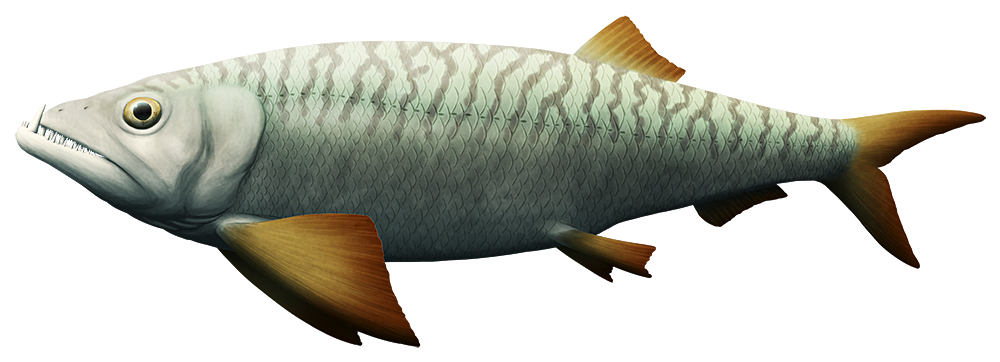First appearing in the mid-Cretaceous, about 113 million years ago, Enchodus was a small-to-medium-sized genus of predatory fish. Different species ranged from a few centimeters to up to 1.5m in length (4′11″), with Enchodus gladiolus here being an averaged-sized example at about 60cmlong (2′).
The most distinctive feature of these fish were the enlarged fang-like teeth in both their upper and lower jaws, over 6cm (2.4″) long in the largest individuals, which may have been a specialization for feeding on soft-bodied cephalopods.
Despite having been nicknamed “saber-toothed herrings”, they weren’t actually closely related to herrings at all, instead being part of the aulopiformes – a group also containing modern lizardfish, lancetfish, and a different type of sabertooth fish.
Fossils of various Enchodus species have been found all over the world, and they seem to have been very common and important members of ancient marine ecosytems, occupying mid-level carnivore niches and in turn being eaten by other predators. Their remains have been identified within the preserved stomach contents of marine reptiles such as plesiosaurs and mosasaurs, as well as sharks and hesperornithean birds.
These toothy fish survived through the end-Cretaceous mass extinction and continued their success for almost 30 million years into the Cenozoic, with the last known fossils dating to just 37 million years ago in the Late Eocene. They probably didn’t survive much longer beyond that date, since there was an extinction event at the Eocene-Oligocene boundary (~34 mya), a period of sudden cooling that affected many marine animals at the time.

